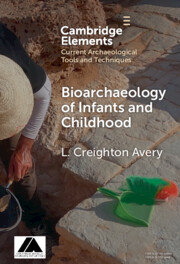Refine search
Actions for selected content:
417 results
3 - Parents Who Came Around
- from Part I - Childhood
-
- Book:
- The Artist's Life
- Published online:
- 04 November 2025
- Print publication:
- 20 November 2025, pp 15-22
-
- Chapter
- Export citation
8 - The Winding Path
- from Part II - Discovery
-
- Book:
- The Artist's Life
- Published online:
- 04 November 2025
- Print publication:
- 20 November 2025, pp 49-58
-
- Chapter
- Export citation
9 - Development
-
- Book:
- Cognitive Neuroscience of Decision-Making
- Published online:
- 14 November 2025
- Print publication:
- 20 November 2025, pp 97-111
-
- Chapter
- Export citation
6 - Sudden Insight
- from Part II - Discovery
-
- Book:
- The Artist's Life
- Published online:
- 04 November 2025
- Print publication:
- 20 November 2025, pp 37-41
-
- Chapter
- Export citation
7 - Specific Inspiration
- from Part II - Discovery
-
- Book:
- The Artist's Life
- Published online:
- 04 November 2025
- Print publication:
- 20 November 2025, pp 42-48
-
- Chapter
- Export citation
1 - Supportive Parents
- from Part I - Childhood
-
- Book:
- The Artist's Life
- Published online:
- 04 November 2025
- Print publication:
- 20 November 2025, pp 3-9
-
- Chapter
- Export citation
2 - The Extended Family
- from Part I - Childhood
-
- Book:
- The Artist's Life
- Published online:
- 04 November 2025
- Print publication:
- 20 November 2025, pp 10-14
-
- Chapter
- Export citation

Stress in Childhood
-
- Published online:
- 06 November 2025
- Print publication:
- 04 December 2025
-
- Element
-
- You have access
- HTML
- Export citation
Chapter 2 - Normal Childhood Development: Theories and Influence
-
-
- Book:
- Seminars in Child and Adolescent Psychiatry
- Published online:
- 10 October 2025
- Print publication:
- 30 October 2025, pp 19-33
-
- Chapter
- Export citation
Independent versus joint effects of polygenic or family-based schizophrenia risk in diverse ancestry youth in the ABCD study
-
- Journal:
- Psychological Medicine / Volume 55 / 2025
- Published online by Cambridge University Press:
- 30 October 2025, e327
-
- Article
-
- You have access
- Open access
- HTML
- Export citation
Object play in Tsimane children: implications for sex-specific division of labour
-
- Journal:
- Evolutionary Human Sciences / Volume 7 / 2025
- Published online by Cambridge University Press:
- 23 October 2025, e37
-
- Article
-
- You have access
- Open access
- HTML
- Export citation

Theory of Mind in Childhood
-
- Published online:
- 20 October 2025
- Print publication:
- 13 November 2025
-
- Element
- Export citation
Genetic influences for distinct impulsivity domains are differentially associated with early substance use initiation: Results from the ABCD Study
-
- Journal:
- Psychological Medicine / Volume 55 / 2025
- Published online by Cambridge University Press:
- 20 October 2025, e313
-
- Article
-
- You have access
- Open access
- HTML
- Export citation
11 - Childhood
- from Part III - Lifespan Development in Diverse Sociocultural Contexts
-
-
- Book:
- The Cambridge Handbook of Psychological Anthropology
- Published online:
- 22 October 2025
- Print publication:
- 25 September 2025, pp 275-302
-
- Chapter
- Export citation
Case 50: - Child and Adolescent Mental Health Services
- from Part 1: - Vignettes
-
- Book:
- Practise Psychiatry
- Published online:
- 04 September 2025
- Print publication:
- 18 September 2025, pp 410-417
-
- Chapter
- Export citation
Use of epicardial adipose tissue as a marker in cardiac involvement in childhood primary hypertension
-
- Journal:
- Cardiology in the Young / Volume 35 / Issue 10 / October 2025
- Published online by Cambridge University Press:
- 15 September 2025, pp. 2106-2112
-
- Article
- Export citation

Bioarchaeology of Infants and Children
-
- Published online:
- 25 August 2025
- Print publication:
- 25 September 2025
-
- Element
- Export citation
Chapter 18 - Epilepsy Syndromes
- from Part III - Specific Conditions
-
- Book:
- How to Read an EEG
- Published online:
- 27 September 2025
- Print publication:
- 24 July 2025, pp 259-283
-
- Chapter
- Export citation
Chapter 5 - Maturation
- from Part I - Basics
-
- Book:
- How to Read an EEG
- Published online:
- 27 September 2025
- Print publication:
- 24 July 2025, pp 42-56
-
- Chapter
- Export citation
Chapter 16 - Video Gaming Latinidad
- from Part III - Emerging Media
-
-
- Book:
- Latinx Literature in Transition, 1992–2020
- Published online:
- 19 June 2025
- Print publication:
- 03 July 2025, pp 295-314
-
- Chapter
- Export citation
